At the start of a typical project life cycle, costs are:
Which output of Project Cost Management consists of quantitative assessments of the probable costs required to complete project work?
The following is a network diagram for a project.
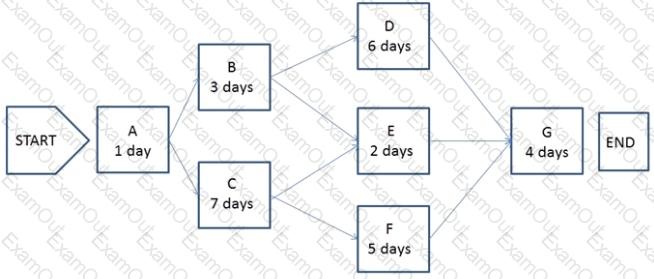
What is the critical path for the project?
The following chart contains information about the tasks in a project.
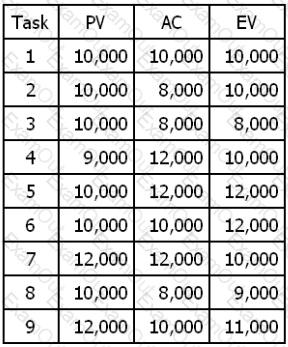
Based on the chart, what is the cost variance (CV) for Task 6?
An example of a group decision-making technique is:
The zero duration of milestones in project planning occurs because milestones:
Project deliverables that have been completed and checked for correctness through the Control Quality process are known as:
Processes in the Initiating Process Group may be completed at the organizational level and be outside of the project's:
Project Stakeholder Management focuses on:
Which quality tool incorporates the upper and lower specification limits allowed within an agreement?
The following is a network diagram for a project.

The free float for Activity E is how many days?
Which tool or technique used in the Control Procurements process can be conducted during the execution of the project to verify compliance with deliverables?
The component of the human resource management plan that includes ways in which team members can obtain certifications that support their ability to benefit the project is known as:
Tools and techniques used in Direct and Manage Project Work include:
The following chart contains information about the tasks in a project.
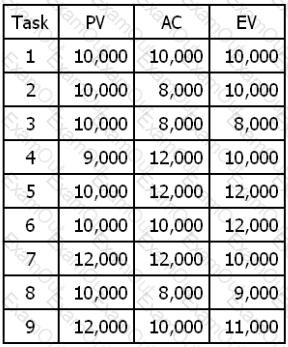
Based on the chart, what is the schedule performance index (5PI) for Task 4?
The process of monitoring the status of the project and product scope as well as managing the changes to the scope baseline is known as:
A project manager requesting industry groups and consultants to recommend project intervention is relying on:
The process of defining how the project scope will be validated and controlled is known as:
A stakeholder expresses a need not known to the project manager. The project manager most likely missed a step in which stakeholder management process?
The following is a network diagram for a project.

The total float for the project is how many days?
A disadvantage associated with virtual teams is that they:
For a stakeholder with low interest and high power, the project manager should:
A tool and technique used in the Develop Project Charter process is:
During which process does the project team receive bids and proposals?
A project manager should communicate to stakeholders about resolved project issues by updating the:
The risk response strategy in which the project team acts to reduce the probability of occurrence or impact of a risk is known as:
Which process is conducted from project inception through completion and is ultimately the responsibility of the project manager?
Which is an enterprise environmental factor?
Which type of probability distribution is used to represent uncertain events such as the outcome of a test or a possible scenario in a decision tree?
The component of the risk management plan that documents how risk activities will be recorded is called:
An input to the Control Quality process is:
The following chart contains information about the tasks in a project.
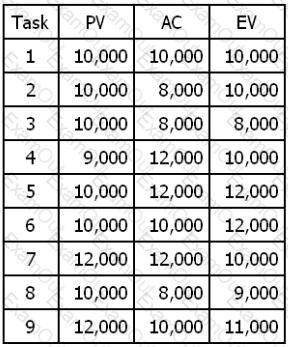
Based on the chart, what is the cost performance index (CPI) for Task 2?
What is the risk rating if the probability of occurrence is 0.30 and the impact if it does occur is moderate (0.20)?
Which process is usually a rapid and cost-effective means of establishing priorities for Plan Risk Responses?
The cost baseline and project funding requirements are outputs of which process in Project Cost Management?
Power, urgency, and legitimacy are attributes of which stakeholder classification model?
Which project risk listed in the table below is most likely to occur?
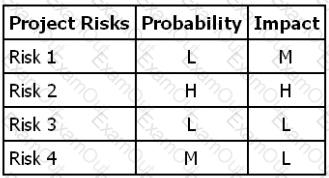
Which document in the project management plan can be updated in the Plan Procurement Management process?
A graphic display of project team members and their reporting relationships is known as a:
Job satisfaction, challenging work, and sufficient financial compensation are values related to which interpersonal skill?
Which type of graphic is displayed below?
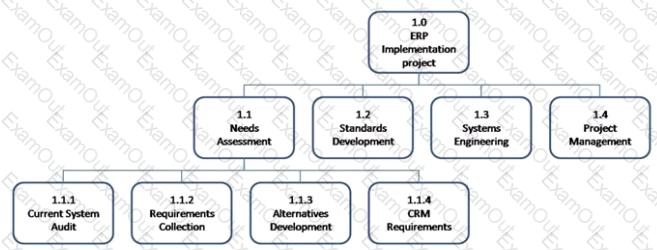
The methodology that combines scope, schedule, and resource measurements to assess project performance and progress is known as:
Grouping the stakeholders based on their level of authority and their level of concern regarding project outcomes describes which classification model for stakeholder analysis?
Skills necessary for project management such as motivating to provide encouragement; listening actively; persuading a team to perform an action; and summarizing, recapping, and identifying next steps are known as:
Which Define Activities tool or technique is used for dividing and subdividing the project scope and project deliverables into smaller, more manageable parts?
The Project Human Resource Management process that involves confirming human resource availability and obtaining the team necessary to complete project activities is:
Which element does a project charter contain?
The purpose of developing a project scope management plan is to:
Perform Integrated Change Control is the process of:
Which of the following statements is true regarding project and product lifecycles?

